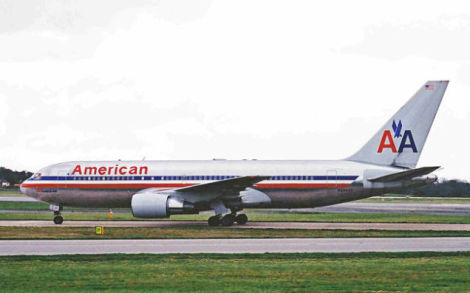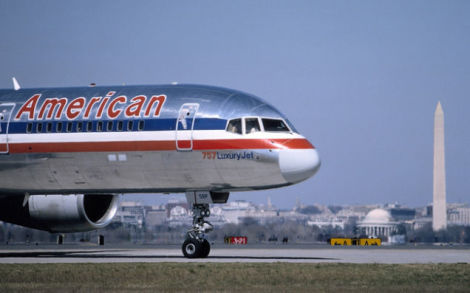September 11, 2001 – Terrorists hijack four commercial airliners and use them to attack the World Trade Center and the Pentagon. A fourth attack targeting Washington, DC is thwarted by passengers.

September 11, 2001 dawned bright and clear on the East Coast as America started the routine of a normal autumn day. Passengers boarding early morning flights in Boston, Newark, and Washington, DC had no idea that they would soon be victims of a brazen, highly coordinated, and murderous attack on the United States carried out by a well-trained group of terrorists. Never before had airplanes been used as a weapon of terror on such a scale, and even though there had been ominous signs that an attack on the US was possible, even probable, nobody was prepared for the horrors that transpired that day.
The attacks were carried out by teams of terrorists organized and funded by Osama bin Laden and the al-Qaeda terror network. The hijackers entered the US in the months ahead of September 11, and some even took flying lessons at American flight schools. One member of the group already possessed a commercial pilot’s license. On the day of the attack, 19 terrorists boarded the planes in groups of four or five. One member of each group was trained to fly the plane while the others provided the muscle to subdue the flight crew and passengers. The four airliners selected for the attack were all flying transcontinental routes that required large aircraft heavy with fuel. The aircraft were chosen to cause the greatest amount of damage to the intended targets.
The first airliner to be hijacked was American Airlines Flight 11, a Boeing 767 (N334AA) making a scheduled flight from Boston to Los Angeles. It departed at 7:59 a.m. (all times are given in Eastern Daylight Time) with a crew of 11 and carried 76 passengers. There were five hijackers on the flight, including the overall leader of the operation, Mohamed Atta. Once the airliner reached cruising altitude, the attackers rose from their seats, stabbed two of the flight attendants and sprayed mace in the first class cabin. They also claimed to have a bomb. While some of the attackers herded the passengers to the rear of the plane, the others gained access to the locked cockpit, perhaps after obtaining a key from one of the flight attendants. After gaining control of the aircraft, Atta turned off the transponder, a device that allows controllers to identify and track the aircraft, and then turned the 767 towards New York City. One of the flight attendants, Betty Ong, contacted an American Airlines Reservation office and reported the hijacking. However, officials had no way of knowing the scope of the attack that had begun. At 8:46 a.m. the airliner struck the North Tower of the World Trade Center in Lower Manhattan, punching a gaping hole in the side of the building and erupting in a massive fireball that started a fuel-fed fire which soon engulfed the upper stories of the skyscraper. At first, witnesses believed that a terrible accident had taken place. No one imagined that an aircraft would be flown deliberately into a building.
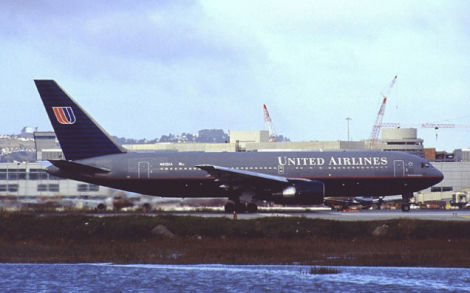
The second airliner to be hijacked was another Boeing 767 (N612UA), United Airlines Flight 175, also bound for Los Angeles. With 51 passengers and nine crew, the airliner took off from Boston at 8:14 a.m., just as the hijacking of Flight 11 was beginning. Following a similar scenario, the five hijackers claimed to have a bomb on board the plane, killed the pilots and took control of the aircraft, then moved the passengers and remaining crew to the rear of the plane. Passengers on board the flight made contact with loved ones and airline officials on the ground using cell phones and phones built into the seats. They provided information that would be crucial to the eventual understanding of the events that were unfolding. At 8:52 a.m., the hijackers turned the airliner toward New York City. Seventeen minutes after the first airliner struck the North Tower of the World Trade Center, Fight 175 slammed into the South Tower at 9:03 a.m. with the same devastating effect. One plane flying into a skyscraper could have been an accident. A second, within minutes of the first, was unimaginable. Government officials and air traffic controllers were only now beginning to suspect that a coordinated attack was under way.
The third airliner to be hijacked was American Airlines Flight 77, a Boeing 757 (N644AA) scheduled to fly from Washington Dulles International Airport in northern Virginia to Los Angeles that departed at 8:20 a.m. with 58 passengers and a crew of six. Once the airliner reached its cruising altitude, the five hijackers, armed with knives and box cutters, moved against the cabin crew, though there were no reports of stabbings. Again, they herded the passengers and crew to the rear of the plane. It is not clear if the pilots were killed when the hijackers took control of the aircraft, but at 8:54 a.m. the transponder was turned off and primary radar contact with the aircraft was lost. The hijacker in control of the plane then turned south towards Washington, DC. At 9:29 a.m., air traffic controllers reestablished radar contact with the plane and learned that it was heading back towards northern Virginia at high speed. Five minutes later, the hijacker pilot made a final turn towards the Pentagon and advanced the throttles to full power. At 9:37 am the 757 smashed through the west side of the building at 530 mph. It took just eight-tenths of a second for the airliner to penetrate 310 feet through three of the Pentagon’s five rings.
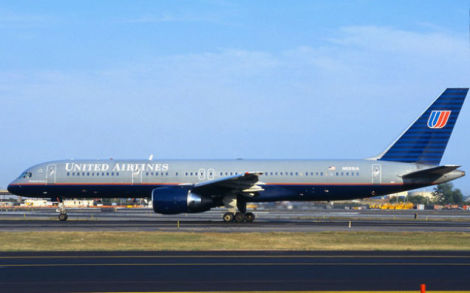
The fourth airliner, United Airlines Flight 93, was another Boeing 757 (N591UA). On board were seven crew members and 33 passengers, but only four hijackers (the man suspected of being the fifth hijacker had been denied entry to the US a month before). Flight 93 was scheduled to depart for San Francisco from Newark International Airport in New Jersey at 8:00 a.m. but, due to dense fog that morning, the flight did not take off until 8:42 a.m., just four minutes before the first 767 struck the World Trade Center. Even though the earlier hijackings had already taken place, it took some time for the FAA, air traffic controllers, and airline officials to realize that they were facing a scenario of multiple, simultaneous hijackings, and no warnings had been sent out to other aircraft departing at the same time. Flight 93 took off, the crew unaware of the events that were unfolding. The hijacking of Flight 93 began at 9:28 a.m. over eastern Ohio, and passengers and crew were again moved to the rear of the plane. However, the delay in departure meant that passengers who made calls to loved ones and officials on the ground were told of the attacks on the World Trade Center and Pentagon, and they realized that their aircraft was part of an organized attack on the United States. Huddled in the back of the plane, the passengers started discussing what, if anything, they could do.
They chose to fight back.
“Let’s roll”
Faced with almost certain death, the passengers on Flight 93 decided to make an assault on the front of the aircraft in an attempt to regain control of the airliner or, at the very least, stop the hijackers from hitting their target, which was later believed to be the US Capitol or the White House. Todd Beamer, one of the passengers who helped organize the attempt to retake the plane, was heard over an open phone line saying, “Are you ready? Okay. Let’s roll.” Another passenger ended her phone call to a loved one saying, “Everyone’s running up to first class. I’ve got to go. Bye.” At 9:57 a.m. the passengers’ began their assault on the terrorists. Sounds of a struggle could be heard in the background over the open phone lines. The hijacker flying the plane, Ziad Jarrah, realized that the passengers were fighting the other hijackers in the first class cabin and initiated a series of violent maneuvers in an attempt to disrupt the assault, but muffled sounds of the battle continued to be captured on the cockpit voice recorder. When Jarrah realized that the passengers would soon gain entry to the cockpit and that the terrorists’ mission to strike the nation’s capital would not succeed, he rolled the 757 onto its back and dove earthward, impacting the ground near Shanksville, Pennsylvania at 10:03 a.m. at a speed of 563 mph. Flight 93 was only 20 minutes from Washington, DC.
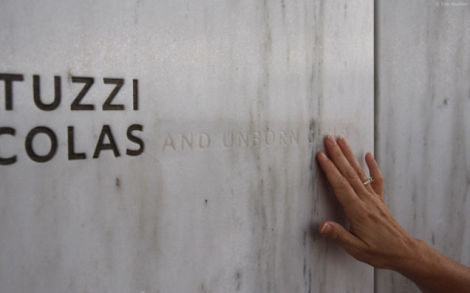
Once the full scope of the attack was understood, officials implemented part of the plan called the Security Control of Air Traffic and Air Navigation Aids (SCATANA), “an emergency preparedness plan which prescribes the joint action to be taken by appropriate elements of the Department of Defense (DOD), Federal Aviation Administration (FAA), and the Federal Communications Commission (FCC) in the interest of national security in order to effect control of air traffic and air navigation aids under emergency conditions.” The plan, devised to protect the nation in the event of a nuclear attack, limits the use of American airspace to military and other official flights. However, it was not fully implemented on September 11, as the DOD left the FAA in charge of the air traffic control system, and left radio navigational aids operating to assist the thousands of aircraft still in the air over the US to land safely, or to divert to alternate airports.
At 9:42 a.m., five minutes after Flight 77 struck the Pentagon, FAA National Operations Manager Ben Sliney made the unprecedented call to immediately land all aircraft already in flight over the US and to place a ground stop on all aircraft awaiting takeoff. Incoming international flights were ordered to turn back if they had enough fuel, or to land at airports in Canada or Mexico. By approximately 12:15 pm, American airspace was completely cleared of commercial and civilian air traffic. To the north, the Canadian military took control of their airspace with the implementation of the Emergency Security Control of Air Traffic Plan (ESCAT). Incoming airliners, and those diverted from the US, were directed to airports away from major Canadian cities such as Toronto, Ottawa and Montreal. Canada ultimately took in 255 aircraft at 17 different airports across the country. Some airports were overwhelmed with aircraft, as a certain percentage of all the aircraft in North America must be in the air at any given time. There is simply not enough room to put them all on the ground at once and still maintain operations.
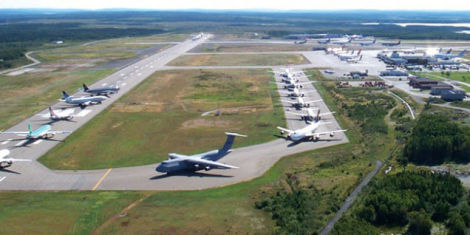
In all, 2,977 people were killed in the September 11 attacks, a number which does not include the 19 hijackers. Of that total, 246 were passengers on the four airliners hijacked that day. Civilian flights in the US resumed on September 13, but the inevitable changes to airline travel have made the flying experience much different than it was before 9/11. Cockpit doors were armored and secured. Airport security was federalized with the creation of the Transportation Security Administration. Passenger screening was greatly expanded, no-fly lists were created for those individuals who are on terrorist watch lists, and the non-flying public was barred from entering the gate area of airports. But beyond the physical changes to our airports, and the procedural changes to how we fly, the heroism and courage displayed by the passengers on Flight 93 in the face of certain death changed the way the world faces the threat of air terrorism. The actions of Todd Beamer and his fellow passengers on September 11, 2001 emboldened the flying public to stand against terrorism, and fight back in any way possible. It is unlikely that hijackers will find an airplane full of submissive victims in the future.
Sources: National Commission on Terrorist Attacks Upon the United States; The US Department of Defense; The Canadian Encyclopedia; Wikipedia (various).
